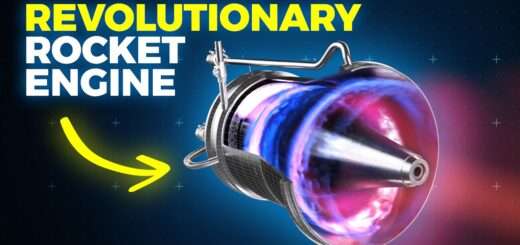Tiangong: Behind China’s Answer to the International Space Station | WSJ
– [Narrator] If you want to conduct experiments like this in space, – We are trying to grow edible plants. – [Narrator] this is the only place to do it. But soon, the International Space Station will have company. In April, China launched the core part of its new space station, called Tiangong, which means heavenly palace in Chinese. (speaking in foreign language) – This is a brand new modular space station. There are many exciting things about it. – [Narrator] China says Tiangong will be up and running by 2022, becoming a research spacecraft that will orbit Earth alongside the nearly 23-year-old International Space Station. NASA and its partner countries have agreed that the older spacecraft will operate through 2024, though its future after that is unclear. – If the International Space Station retires in 2024, the Chinese space station will be the only permanent space station in low Earth orbit. It means that China could have a very strong global presence and influence. – [Narrator] So here’s what’s on China’s new space station and how it compares with the international one. The first thing you have to know about China’s space station, it’s building it all by itself, and some of the reasons for that go back about a decade. – China is not part of the International Space Station. – [Narrator] Quentin Parker is the Director of the Laboratory for Space Research at the University of Hong Kong. He’s been researching space science for over four decades. – They’re primarily political around issues of trust and technology transfer, which is driven principally by the United States. – [Narrator] Since 2011, China has been excluded by U.S. law from working with NASA. As a result, China’s astronauts have not been allowed to set foot on the International Space Station, which is a collaboration with five space agencies. China’s foreign ministry said that the U.S. is judging an upright man with a petty mind. – In some ways, it’s been extremely beneficial to China, because it’s given China the impetus and the political will to move forward with their own very ambitious space endeavors. – [Narrator] And China’s space station ambition has been 30 years in the making. In 2003, it’s sent its first astronauts to space, making it the third country after the U.S. and Russia to do that. Less than a decade later, China said it successfully launched two test modules which are the basis for any space station design. – These modules are then put together a bit like Lego. The reason in modular, of course, is you can’t put the whole thing up in one go. You have to put it up bit by bit using many launches. – [Narrator] The International Space Station currently has 16 modules, whereas China only has one in orbit. But eventually, Tiangong will be made up of three. – It’s only about a quarter or so of the size of the current International Space Station. Three people can live on the Chinese space station at the moment. – [Narrator] Compare that with the six people usually on board the International Space Station, or in 2009 when there was a record total of 13 astronauts at one time. And China could potentially reach that capacity too, just by adding more modules. Thanks to this design, the International Space Station has been an evolving project since 1998. – So if one module has failed catastrophically, or it’s no longer cutting edge, you can detach it and just reattach a new one. – [Narrator] While the Tiangong spacecraft is smaller, China says it’s equipped with more advanced technology. – When you’re the last kid on the block, do you have the opportunity to do things at the last minute with the best technology around. – [Narrator] And one of them is a system that helps power Tiangong with solar panels. (speaking in foreign language) The electricity generated from the panel wings essentially helps keep the lights on. But one unique part about China’s setup is that it also powers the space craft’s propulsion technology. So even though Tiangong still uses regular fuel propellants like the International Space Station, China says it doesn’t have to use as much to stay afloat in orbit. – If you’re not using a liquid or solid fuel propellant for your propulsion, then you’re not carrying that weight, then that’s a saving. – [Narrator] China’s space agency says its propulsion system is about five times more efficient and powerful than the International Space Station’s, which is a gas guzzler. – So we’re gonna fire the engines in the aft end of the space station. – [Narrator] Consuming about nine tons of fuel annually to stay in orbit. Another piece of equipment that the International Space Station doesn’t have, a tag-a-long space telescope. It’s called Xuntian, which means heavenly cruiser in Chinese, and will orbit parallel to the Space Station. – A bit like the Hubble Space Telescope, but this will have an enormously large camera which can look up to 300 times the field of view of the Hubble Space Telescope in one hit. – [Narrator] The Chinese telescope will be able to refuel and be serviced by directly docking at Tiangong, unlike the Hubble Telescope, which because it orbits on its own, requires astronauts to fly in from Earth for repairs. And one day, China space telescope could be used by other countries, because China has said it’s new space station is designed for collaborations. – So for China, international cooperation in space means its space capacity has legitimacy, and second, it can build influence. – [Narrator] Namrata Goswami is an independent researcher who’s been studying global space policy for more than 20 years. – [Namrata] With the completion of the Chinese space station by 2022, that will be a competitive alignment for countries that want to choose which space station they would launch their experiments on. – [Narrator] Goswami says China’s decision-making process could be very different from the International Space Station, which requires consensus among its partners. – Chinese space station is going to be operated by China. Any decision to allow a particular scientific experiment to be conducted in the Chinese space station will of course be taken by China. (speaking in foreign language) – [Narrator] And more of these decisions could come soon, since Tiangong is set to be completed by 2022. (speaking in foreign language) And that milestone is another one in just a few years, in addition to landing on the far side of the Moon, to sending a rover to roam Mars. – It is very clear that China’s investment in space is about turning China into a aerospace power. – [Narrator] But China won’t be the only one left to fill the vacancy when the International Space Station heads into retirement. NASA is leading a plan to launch an outpost that will work like the International Space Station but instead orbit the Moon. And Russia has indicated that it could launch its own space station by 2030. – Space is always seen as a part of geopolitics. The competition that is ongoing is which country has the more attractive space capacity in low Earth orbit and beyond?













